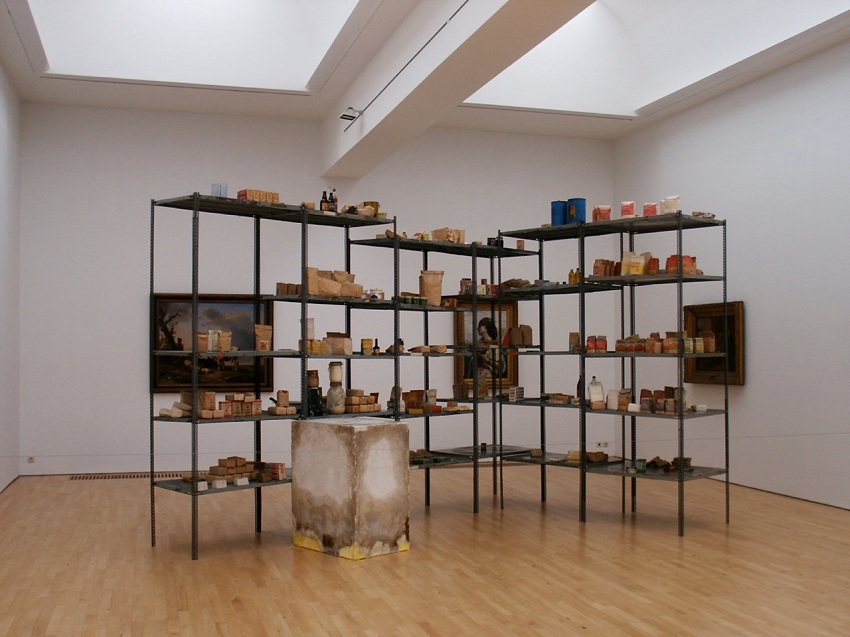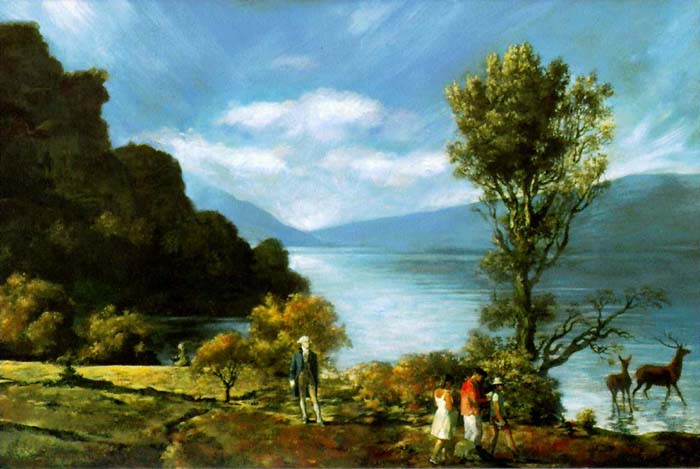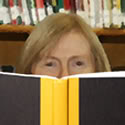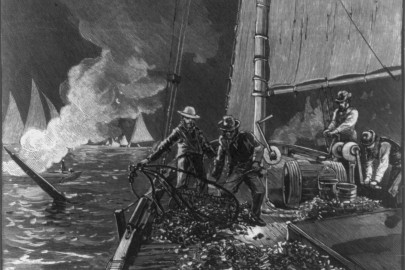Rita discovers the Platonic Ideal of an American painting…
“You want to see modern art? Here” said my cousin, opening the door to his garage with a flourish and gesturing towards metal shelves stacked with the usual detritus of utility rooms the world over. We were in Ghent, Belgium, home to one of the greatest paintings of all time, Jan Van Eyck’s altarpiece The Adoration of the Mystic Lamb (Aanbidding van het Lam Gods), a work we had seen many times. Now we planned a different art experience, a visit to Ghent’s famed S.M.A.K. Museum (Stedelijk Museum Voor Actuele Kunst). My cousin was issuing a warning.
S.M.A.K. did not make a good first impression. In the middle of the lobby janitors had abandoned a large trolley piled with cleaning supplies and garbage bags. Only as I drew closer did I see the plaque – this was one of the art exhibits! As we gasped and giggled in shock, a self-appointed art expert in our midst murmured repressively “he is a very important artist.” Apparently so was Joseph Bueys, the creator of the metal shelving installation (Wirtschaftswerte) my cousin had mocked, and the “artist” who rolled up a filthy old mattress with a tape inside playing the sound of a man snoring. The glass bowl containing muddy water with a few strands of greenery clinging to life like a school botany project gone wrong? “A seminal work.” A little of this and you start to feel like an unlettered rube just because you prefer the Impressionists, or het Lam. Is art really in the eye of the beholder, or can experts successfully persuade us that works like Wirtschaftswerte or Damien Hirst’s chopped up cows suspended in formaldehyde are, indeed, art? To find answers I turned to art critic Robert Hughes’ classic book The Shock of the New. There is no better survey of art in the twentieth century, but Hughes does have a distinct point of view. He argues that no subsequent artist could outdo Marcel Duchamp’s iconic 1917 work Urinal. According to Hughes, in the moment of its creation modern art simultaneously experienced its birth and its apogee and arrived at a dead end. The point was to shock and provoke the viewer into questioning the definition of art. The shelving installation certainly succeeded in that regard. My morning at S.M.A.K. convinced me that the real art lies in the wording on the plaques that describe and interpret these objects for the viewer. Hughes wrote that Damien Hirst’s real skill lies in manipulating the art world into taking him seriously.
Leaving art critics out of it, what kind of art is most popular? Following my S.M.A.K. experience I came across a book on the library shelves, The Art Instinct by Dennis Dutton, which provides a fascinating answer. Surveys taken around the world to discover what features people most like to see in a painting found that, across all cultures, the most popular painting is a landscape with trees, an open vista, and some water, a river, lake or stream. Dutton argues that this preference is an instinct dating back millennia to our hominid ancestors, because it precisely describes the most favorable habitat for early man. The ideal painting includes plants and animals to provide food, and Americans add another element: they like to see a Founding Father standing somewhere in the landscape! Using the results of the surveys Russian artists Komar and Melamid painted a series of Most Wanted Paintings for various cultures. Here is America’s Most Wanted, with George Washington surveying the ideal terrain:
On my next visit to Ghent I decided to give S.M.A.K. a pass – it was back to Sint Baaf’s Kathedraal to see the Van Eyck altarpiece once more. In the eye of this beholder it has no peer. But on my dining room wall hangs proof that I am firmly in the popular tradition of our hominid ancestors, a reproduction of a Constable landscape. Vista – check, trees – check, water – check, animal food source – check. Grazing cows, very much alive, in one piece, and not suspended in formaldehyde!














Say what you like about Beuys, when it came to sculpting in lard he was the cat’s whiskers, the envy of local butchers throughout Germany, bit of a prima donna, he and Richter circled each other for many years after some initial contact, Beuys teaching and Gerhard learning, at Düsseldorf. Richter muttering “wally,” Bueys muttering “tosser.” In mitigation, anyone born in Krefeld in the early twenties was bound to end up slightly ga-ga. The biggest art joker of all was that Russian bloke whose name escapes me as it was written in a forest of other names, he who painted white squares on white backgrounds as he intoned “attempting to represent the unrepresentable.” Listen, mush, if it’s unrepresentable wot you doing with that brush in your hand.
Anyone requiring a good larf, go see the Andreas Fischer Maschinen exhibition, currently at the Ludwigsmuseum and entitled ‘your time is my rolex’, little bits of stuff held together by little bits of wire while little bits of music play in the background.
Nice picture of Washington admiring Loch Lomond, cue for Daniel Day Lewis?
I’ve been told the UK’s most wanted painting is a beautiful landscape that recalls the ideal habitat of their hominid ancestors with a soldier in the corner bayonetting a Hun at Ypres.
The UK’s most wanted painting is a Beryl Cook portrait of some fat women falling out of a fish and chip shop
I highly recommend to any in the vacinity the Massachusetts Museum of Contemporary Art (Mass MOCA), which has displays to convince us that conemporary art is not a contradiction in terms, and displays that make clear why that is a real question.
Also, Rita may have explained the enduring appeal of Mt. Rushmore, which has everything an ideal work of art should have, carved into the face of a mountain with dynamit.
You can view the Most and Least Wanted paintings for a selection of countries at this site:
http://awp.diaart.org/km/painting.html
Holland and Italy are especially interesting.